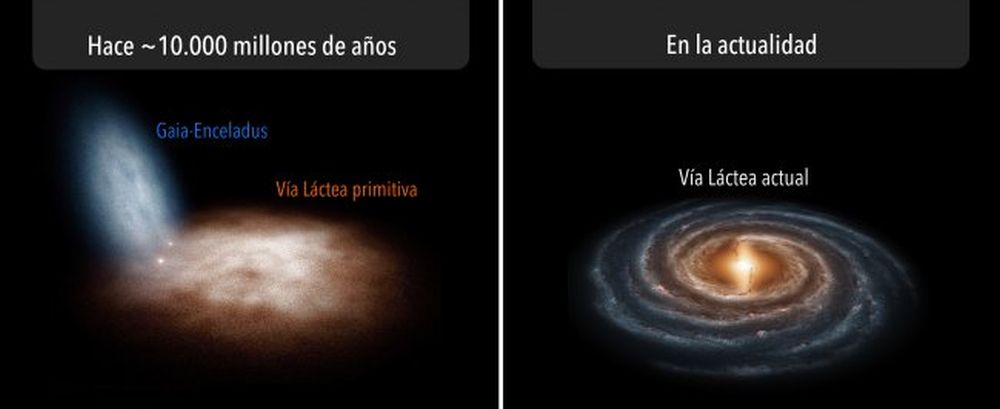[/caption]
Dark matter… It came into existence at the moment of the Big Bang. Within its confines, galaxies formed and evolved. If you add up all the parts contained within any given galaxy you derive its mass, yet its gravitational effects can only be explained by the presence of this mysterious subatomic particle. It would be easy to believe that the larger the galaxy, the larger the amount of dark matter should be present, but new research shows that isn’t so. Dwarf galaxies have even higher proportions of dark matter than their larger counterparts. Although the dwarfs are the most common of all, we know very little about them – even when they consume each other. Enter the star stream…
“Several of my previous images feature the fossil remnants of these ancient mergers as faint stellar rivers called tidal streams. These stellar streams are the table crumbs from small dwarf galaxies that were gravitationally dismembered as they were devoured by the larger galaxy they orbited.” says astrophotographer, R. Jay Gabany. “The theory implies dwarf galaxies also merged and are still merging with each other. But, there has never been clear photographic evidence or a close investigation of dwarf galactic mergers until now.”
The target is NGC 4449, a small, irregular dwarf galaxy much like the Milky Way’s Large Magellanic Cloud. What makes it interesting to astronomers is the presence of thousands of hot blue stars and massive red regions interspaced with thick dust clouds. It isn’t just forming new stars… it’s experiencing an explosion of star birth! According to current theory, dwarf galaxies such as this one could be undergoing a merger event, but there hasn’t been photographic proof until now.
“The picture I am sharing is of a small, dwarf galaxy known as NGC 4449 that’s located about 12.5 million light years from Earth towards the northern constellation of Canes Venatici, the Hunting Dogs. This galaxy is about the size of our Milky Way’s largest satellite galaxy, the Magellanic Cloud. But, NGC 4449 is much farther away and it is experiencing a major star burst event- an episode characterized by the production of new stars at a furious rate.” says Gabany. “This image is unique because it captures the first dwarf galaxy known to have its own tidal stream of stars. Therefore, it represents the first closely studied example of a dwarf galaxy merging with an even smaller dwarf star system! The professional astronomers with whom I work also suspect the merger may have contributed to the ferocious production rate of new stars inside NGC 4449.”
The research done by the team led by Dr. David Martinez-Delgado has some very interesting ramifications and their paper has been accepted for publication in the Astrophysical Journal Letters.. As so well put in Jay’s photographic explanation in his webpage; “Although the cold dark matter theory predicts mergers and interactions between dwarf galaxies, there is scant observational evidence that these types of mergers are still happening in the nearby local Universe. Interactions between dwarf galaxies invoke the possibility of exploring a very different merger regime. For example, research has shown that multiple dwarf galaxies with different stellar masses may exist in similar sized dark matter halos, hence what appears as a minor merger of stars could be a major dark matter merger. Studying interactions on a small scale, such as NGC 4449, provides unique insights on the role of stars versus dark matter in galactic merger events.”
Where once amateur astrophotographers painted beautiful portraits of what lay just beyond human perception in deep space, they are now crafting images capable of true science. The eyes of their telescopes are being combined with professional instruments and producing amazing results.
“We live in an age where science has become unfettered from examining the Universe with only our physical six senses.” concludes Gabany. “This has unlocked a profound new level of understanding, resolved ancient mysteries and unlatched a Pandora’s chest filled with new questions begging for answers. We still have much to learn.”
For Further Reading: Dwarfs Gobbling Dwarfs: A Stellar Tidal Stream Around NGC 4449 and Hierarchical Galaxy Formation On Small Scales and The Big Deal About Dwarf Galaxies.



